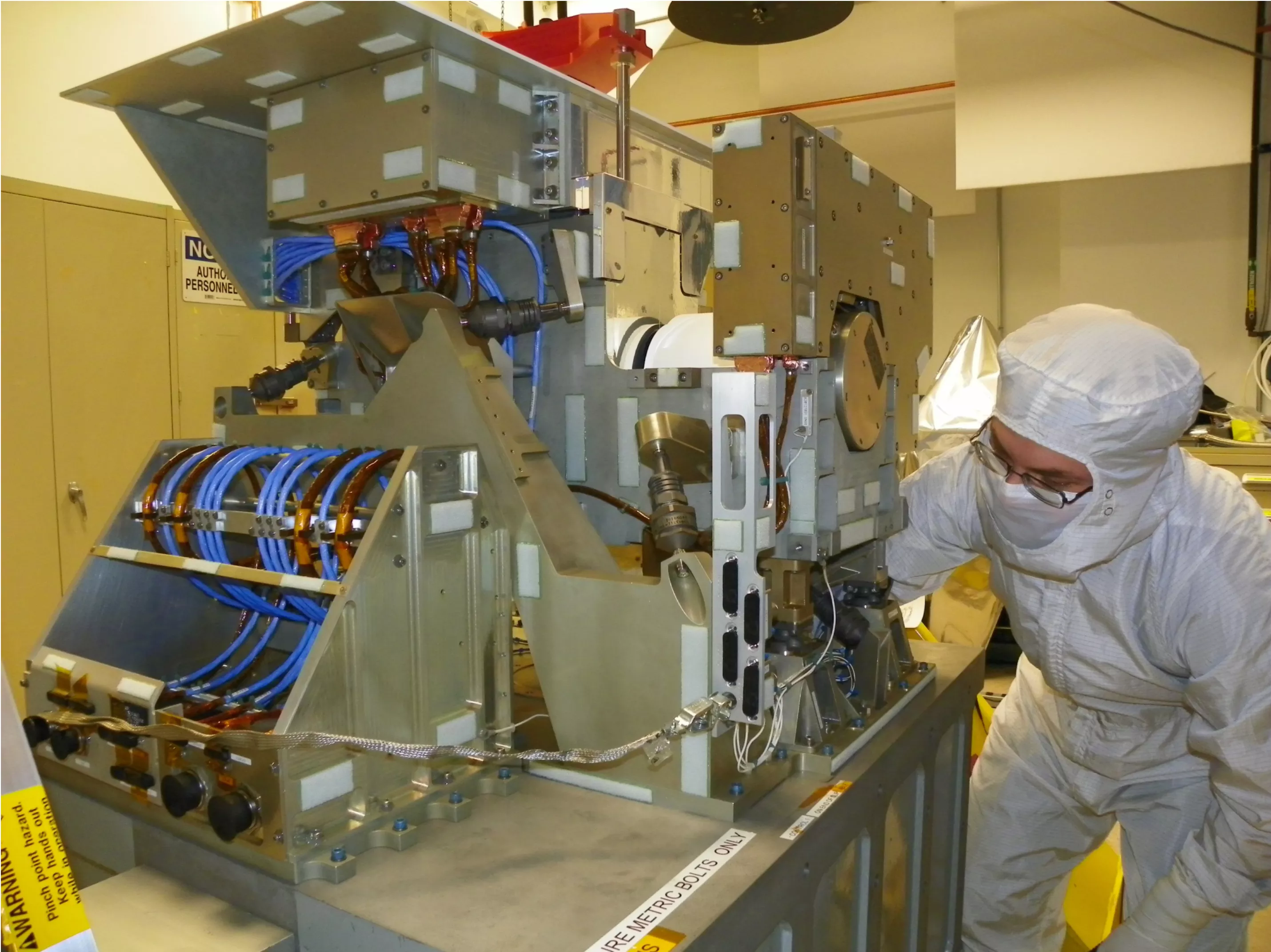A team of engineers, scientists, and satellite operators recently restored a damaged satellite instrument that is used to measure temperature and water vapor in the Earth’s atmosphere.
After the instrument, the Cross-track Infrared Sounder (CrIS), was damaged by radiation as it flew on the Suomi-NPP satellite, the team made a successful switch to the sensor’s electronic B-side, returning the instrument to full capability.
Meanwhile, to fill the data gap created by the event, scientists from the Joint Polar Satellite System fast-tracked similar data from Suomi-NPP’s cousin, the NOAA-20 satellite, to the National Weather Service (NWS).
The CrIS instrument probes the sky vertically for details on temperature and water vapor — using a process is known as sounding. These observations provide important information on our planet’s atmospheric chemistry and composition, which inform weather forecast centers, environmental data records and field campaign experiments. CrIS can also quantify the distributions of trace gases in the atmosphere, such as carbon dioxide and methane.
CrIS sees in three spectral bands within the infrared part of the spectrum: shortwave, midwave and longwave. Analysts first detected the anomaly in the midwave data on Saturday, March 23. By Monday, things weren’t looking good, said Flavio Iturbide-Sanchez, the CrIS instrument’s calibration validation lead for NOAA/NESDIS/STAR.
The midwave band, which includes channels sensitive to water vapor, had stopped reading properly. The next day, measurements from that band had disappeared completely.
“Midwave is particularly focused on moisture,” said Clayton Buttles, the CrIS chief engineer for L3Harris Technologies, the instrument’s contractor. “Losing that creates a hole in the data products used to generate weather forecast predictions. Ideally, you want to combine all three bands into a comprehensive unit that allows for better forecast and prediction.”
An algorithm called the NOAA Unique Combined Atmospheric Processing System, or NUCAPS provides the only satellite soundings available to National Weather Service’s weather forecast offices, said Bill Sjoberg, a senior systems engineer with NOAA and JPSS. NUCAPS combines infrared and microwave observations to produce atmospheric profiles of temperature and water vapor, and it relies on CrIS data. Without the CrIS soundings, forecasters would have risked losing the ability to derive an important set of measurements during afternoon hours when severe convection is most common.
But NOAA-20, which flies 50 minutes ahead, has its own identical CrIS instrument. Accelerating access to NOAA-20 satellite soundings for the National Weather Service “helped reestablish the ability to track changes in severe weather conditions,” Sjoberg said.
Meanwhile, after months of analyzing what went wrong in March, the team determined that the problem with the instrument was likely caused by radiation damage to its midwave infrared signal processor, said David Johnson, NASA’s CrIS instrument scientist. Raw data from the detectors goes through the signal processor, where the data rate gets greatly reduced in size so that it can be efficiently delivered to the ground stations.
Fortunately, like all of the JPSS instruments and much of the spacecraft, CrIS has redundant parts. It was designed with this threat in mind. It contains a “Side 2,” a fully functional backup set of electronics, which the team hoped had not been damaged.
“But we wouldn’t know without making the switch,” Iturbide-Sanchez said.
For three months, the team studied the instrument. They ran a “reliability analysis.” They weighed the risks. They “located and verified all configuration files for Side 2,” Johnson said
On June 21, the team made the official decision to switch to Side 2, and three days later, they executed the switch. The turn-on process involved tuning the instrument and checking settings. But Iturbide-Sanchez knew almost immediately that the three bands were working.
The plan was to complete the turn-on in two weeks. They did it in five days, a result of working long hours and frequent communication with ground station command. And by early July, satellite soundings had been recovered and the product was good enough to be used in weather models.
It was very much a team effort, Iturbide-Sanchez and Johnson both said: The Cooperative Institute for Meteorological Satellite Studies at the University of Wisconsin and the Joint Center for Earth System’s Technology at the University of Maryland, Baltimore County, worked with the team during both phases, contributing to the preparation of a configuration file before the side switch, and evaluating data quality after.
“NOAA invests in redundant systems to maximize the useful life of the instruments,” said Jim Gleason, NASA project scientist for JPSS. “This is a story of ‘the system’ working as designed.”
Making the successful switch from Side 1 to Side 2 also allows for National Weather Service products that provide early warnings for events like hurricanes, Buttles said.
“We would all be worse off if we didn’t have that data.”

